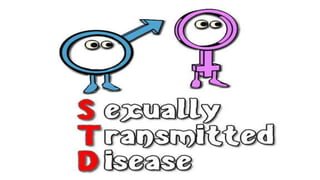Introduction to STIs and HIV:
STIs and HIV are sexually transmitted infections that can have serious health consequences if left untreated.
When we talk about STIs (Sexually Transmitted Infections) and HIV (Human Immunodeficiency Virus), it’s important to understand how they affect our health and how we can prevent them. STIs are infections spread through sexual contact, and HIV is a virus that specifically attacks the immune system, making it harder for the body to fight other infections. Learning about these conditions can help protect yourself and others.STIs include a variety of infections like chlamydia, gonorrhea, syphilis, and herpes. These infections can cause symptoms like pain, sores, or unusual discharge, but sometimes there are no symptoms at all.
HIV, on the other hand, can stay in the body for years without obvious signs, slowly weakening the immune system. Without treatment, HIV can lead to AIDS (Acquired Immunodeficiency Syndrome), a severe stage where the body struggles to fight even minor illnesses.The good news is that both STIs and HIV are preventable. Using condoms, getting tested regularly, and having open conversations with your partner about sexual health can significantly reduce the risk.
If someone does contract HIV, medicines called antiretroviral therapy (ART) can help control the virus and prevent it from progressing to AIDS.Talking openly about STIs and HIV can reduce stigma and encourage people to seek help. Early detection through testing is crucial for effective treatment. Remember, taking care of your sexual health is a normal and important part of overall well-being.

Benefits of Understanding and Managing STIs and HIV:
Learning about STIs (Sexually Transmitted Infections) and HIV (Human Immunodeficiency Virus) offers many benefits for individuals and communities. Understanding these conditions helps in prevention, timely diagnosis, and effective management, ultimately leading to healthier lives and stronger relationships.
1. Prevention of Infections:
Knowing how STIs and HIV are transmitted empowers people to take steps to protect themselves. Using condoms, practicing safe sex, and getting vaccinated for preventable infections like HPV are effective ways to stay healthy. This knowledge reduces the spread of infections and protects future generations.
2. Early Detection and Treatment:
Regular testing for STIs and HIV allows for early diagnosis. Detecting these infections early means treatment can begin sooner, reducing health complications. For example, HIV treatment with antiretroviral therapy (ART) can keep the virus under control, allowing individuals to live long, healthy lives.
3. Improved Relationships:
Open communication about sexual health with partners builds trust and understanding. It encourages mutual responsibility for health and reduces stigma around discussing STIs and HIV. This leads to stronger, more honest relationships.
4. Reduced Stigma:
Educating people about STIs and HIV helps combat the stigma often associated with these conditions. When more people understand that these infections are medical issues, not moral failings, it fosters a more supportive environment for those affected.
5. Protection of Community Health:
Awareness and prevention efforts reduce the spread of STIs and HIV in communities. This helps lower the overall number of infections, making healthcare systems more efficient and improving public health outcomes.
6. Empowerment and Confidence:
Understanding sexual health and how to protect yourself leads to greater confidence in making informed decisions. Knowledge is empowering and helps individuals take charge of their health and well-being.By focusing on prevention, education, and support, the benefits of managing STIs and HIV extend far beyond individual health, creating healthier and more informed communities.
Disadvantages and Challenges of STIs and HIV:
While understanding and managing STIs (Sexually Transmitted Infections) and HIV (Human Immunodeficiency Virus) bring many benefits, there are also significant disadvantages and challenges associated with these conditions. These can affect individuals and communities, particularly when awareness and resources are limited.
1. Health Complications:
Untreated STIs can cause severe health problems such as infertility, pelvic inflammatory disease (PID), and complications during pregnancy. HIV, if not managed properly, weakens the immune system and can progress to AIDS, leaving the body vulnerable to life-threatening infections and illnesses.
2. Social Stigma and Discrimination:
People living with STIs or HIV often face stigma and discrimination, which can lead to isolation and mental health challenges. Fear of judgment may discourage individuals from seeking testing or treatment, worsening their health outcomes.
3. Financial Burden:
The cost of regular testing, medications, and treatments for STIs and HIV can be significant, especially in areas where healthcare is expensive or not easily accessible. This can create financial stress for individuals and families.
4. Emotional Impact:
A diagnosis of an STI or HIV can cause emotional distress, including anxiety, depression, and fear about the future. This emotional toll can affect relationships, work, and overall quality of life.
5. Transmission Risks:
Without proper knowledge and prevention methods, there’s a risk of unintentionally transmitting STIs or HIV to others. This can lead to a cycle of infection within communities, particularly where awareness and resources are limited.
6. Challenges in Treatment Access:
In many parts of the world, access to healthcare services, including testing and treatment, is limited. This can result in delayed diagnosis and treatment, leading to worse health outcomes and a higher risk of spreading infections.
7. Impact on Relationships:
STIs and HIV can strain relationships due to mistrust, fear, or stigma. Partners may struggle with open communication about sexual health, leading to misunderstandings or conflicts.
8. Public Health Challenges:
Managing outbreaks of STIs and HIV requires significant public health efforts, resources, and education. Inadequate funding or infrastructure can hinder these efforts, exacerbating the problem.While these disadvantages highlight the challenges posed by STIs and HIV, they also emphasize the importance of education, prevention, and accessible healthcare to reduce the negative impact on individuals and communities.
Conclusion:
STIs (Sexually Transmitted Infections) and HIV (Human Immunodeficiency Virus) are serious health concerns, but with proper awareness, prevention, and treatment, their impact can be reduced. While these infections pose challenges such as health complications, stigma, and financial burdens, early detection and responsible sexual health practices can help individuals lead healthy lives.Education, open conversations, and regular testing are key to preventing the spread of STIs and HIV.
By removing stigma and ensuring access to medical care, communities can create a safer and more supportive environment for those affected.Taking charge of sexual health benefits both individuals and society. With the right knowledge and proactive steps, we can work toward a future where these infections are better managed, and their impact is minimized.
you must watch 👁️👁️ this article 👇👇👇
What is 4Key Facts About Ohio Abortion Laws?





